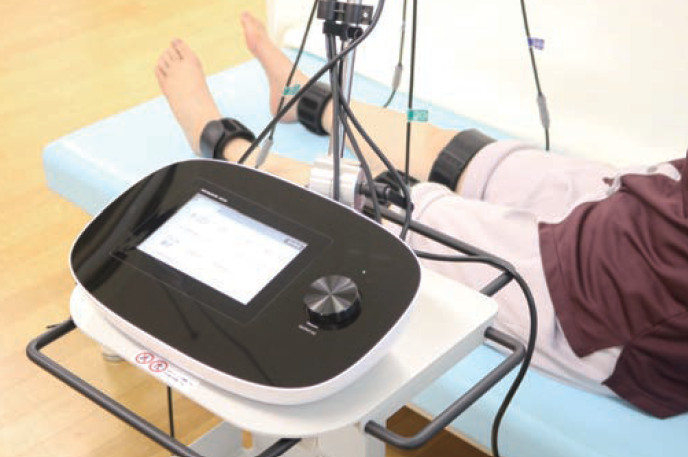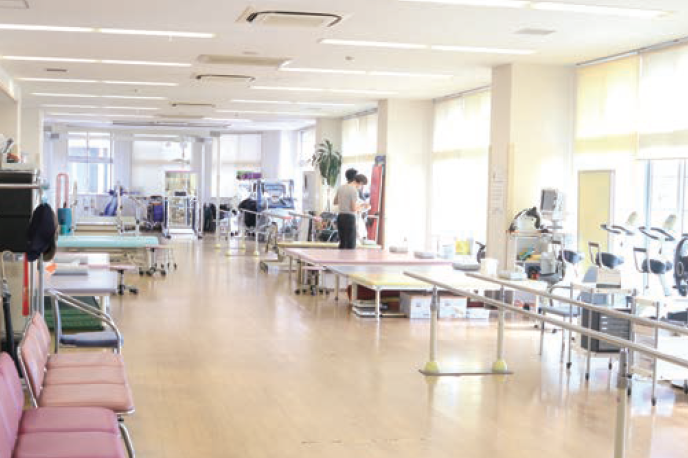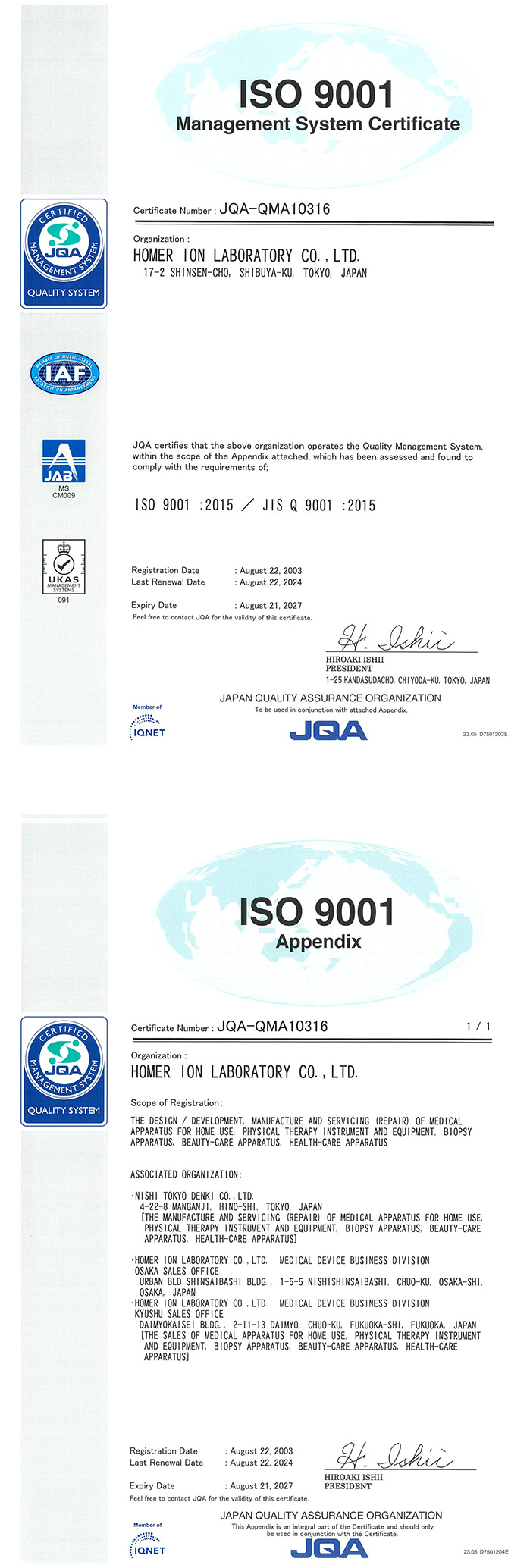



●Kawamura, PT
Our hospital operates under the fundamental philosophy of “For the community, with the community,” providing rehabilitation services from the recovery phase to the living phase. We focus on three key areas: “Adult Rehabilitation,” “Pediatric Rehabilitation,” and “Community Rehabilitation.”
Our facility includes:
・91 recovery-phase hospital beds
・29 community-based integrated care ward beds
In addition to inpatient rehabilitation, we offer a wide range of services, including outpatient rehabilitation for adults as well as home-visit and day-care rehabilitation programs.
●Kawamura, PT
Our hospital has been using B-SES for over five years. The introduction was initially recommended by Dr. Kimura from Hiroshima University Hospital’s Rehabilitation Department. We decided to try it out, as we were facing challenges in effectively implementing exercise therapy and enhancing muscle strength, particularly for our elderly patients. When B-SES was introduced to us, our staff had the opportunity to try the belt electrodes during a demonstration. We immediately felt the full-body muscle contractions, even while lying down. The sensation after using it was similar to the fatigue experienced after voluntary muscle contractions. This was the key factor that convinced us to adopt B-SES.
●Dr. Amano
Yes, as she mentioned, Dr. Kimura from Hiroshima University Hospital recommended “HOMER ION” to us, saying it was beneficial. That’s when we thought, “Why not give it a try?” and decided to test it out.
-Target Users of B-SES
●Kawamura, PT
At our hospital, B-SES is not only used for patients with disuse syndrome but also for those with overlapping disabilities, diseases of the locomotor system, and spinal cord injuries. Additionally, we use B-SES for cardiac rehabilitation patients, always confirming contraindications with the attending physician. We also provide pediatric rehabilitation services using B-SES for patients with cerebral palsy.
●Dr. Amano
We use B-SES for patients who need muscle strengthening but are unable to exercise voluntarily due to physical frailty or other limitations. Especially for spinal cord injuries with incomplete lesions, where core training is necessary, B-SES is applied to support that.
●Kawamura, PT
For spinal cord injury patients, we primarily use B-SES for those with incomplete injuries who have some ability to support themselves when transferring or walking with a cane.
●Dr. Amano
I mainly use B-SES for incomplete cervical spinal cord injuries for core muscle training. It strengthens muscles in areas where voluntary movement is impaired. It’s less used in complete injuries since pain feedback is absent, but highly useful for incomplete paralysis cases.
-Rehabilitation Before the Introduction of B-SES
●Kawamura, PT
Before introducing B-SES, we primarily used manual exercises and devices like ergometers and upper limb treadmills. Compared to those, B-SES induces muscle contraction simply by wearing it.
●Dr. Amano
However, we have not yet collected quantitative data like muscle thickness measurements. Improvements are observed, but we recognize the need for concrete evidence.

-Implementation and Operation of B-SES
●Kawamura, PT
We have no fixed protocol, but typically apply it once daily for 20 minutes in recovery wards, and during each outpatient visit.
●Interviewer
As you mentioned, most hospitals without research settings don’t follow strict protocols. HOMER ION recommends 20-minute sessions, which match a rehabilitation unit time. In practice, many places use about 15 minutes.
●Dr. Amano
How many times per week is it typically performed?
●Interviewer
In clinics, twice a week at most; in hospitals, often daily.
●Kawamura, PT
We want to compare data from daily inpatient use and twice-weekly outpatient use.
-No Patients Discontinue B-SES
●Dr. Amano
So far, no patients have stopped due to pain. This allows continuous use.
●Kawamura, PT
The fact that no one quits is a major benefit. Even patients with no voluntary movement feel improvements. Initial fears of “electrical therapy” disappear after trying B-SES, thanks to its mild sensation yet effective contraction. It can be applied even in wheelchairs or to bedridden patients, which is a big advantage.
●Dr. Amano
Other electrical devices exist, but B-SES is especially well received by patients, with zero dropouts so far. I personally feel it should be used more actively.
●Kawamura, PT
To be honest, I was skeptical at first. But the fact that patients don’t quit, don’t resist, and continue showed me its value.
●Dr. Amano
In community-based integrated care wards, therapists can only provide two units per session. I believe using B-SES within those two units is effective. Ideally, therapists focus on movement training, while B-SES supports muscle strengthening as part of self-training. I strongly recommend this approach.
●Kawamura, PT
I agree — we need to establish an internal system.
●Dr. Amano
But it shouldn’t be introduced just to make therapists’ jobs easier.
●Interviewer
Balancing those aspects is tricky, but many administrators see B-SES as a way to overcome community-based integrated care challenges.
●Dr. Amano
Based on Rehabilitation Technology Association data, rehab effectiveness requires active physical therapist involvement.
-Billing Methods for Medical Fees
●Kawamura, PT
When a therapist evaluates and treats a patient while present, B-SES cost is included in the rehab fee. Without a therapist present, it’s not billed.
●Dr. Amano
I believe B-SES is an excellent technology, and I am particularly impressed by the advanced technology of HOMER ION. I definitely want to continue using B-SES. However, I also believe that accumulating clinical evidence is crucial. Moving forward, I would like to establish a standardized protocol for B-SES usage and systematically gather data on patient outcomes, such as “this patient experienced this improvement, while that patient had this result.”
●Kawamura, PT
Personally, I hope that B-SES can be made smaller. A more portable version of B-SES would be beneficial, especially for hospital wards where mobility is important. It could also be used in home rehabilitation!
●Dr. Amano
Nice! That’s a great idea!


